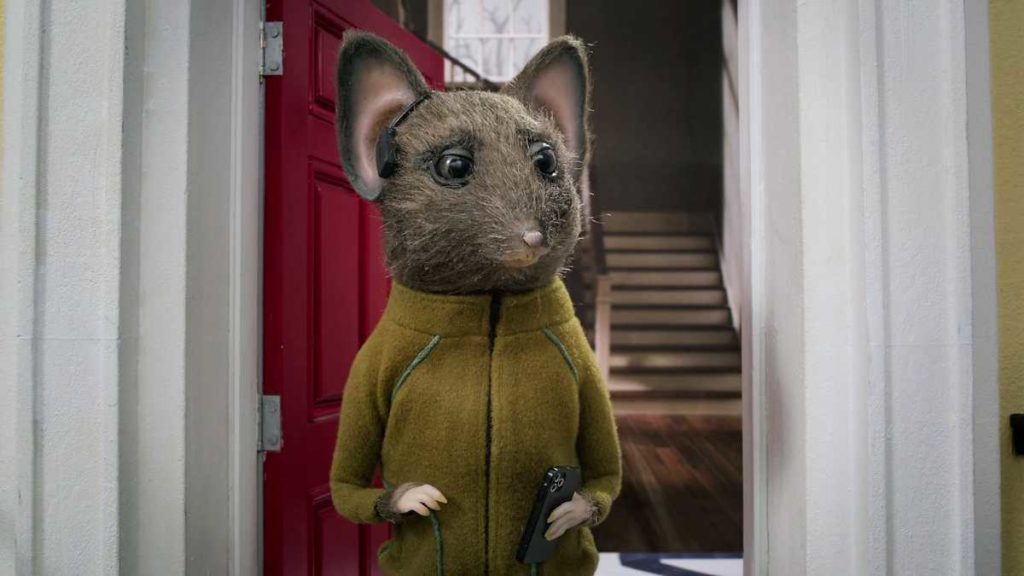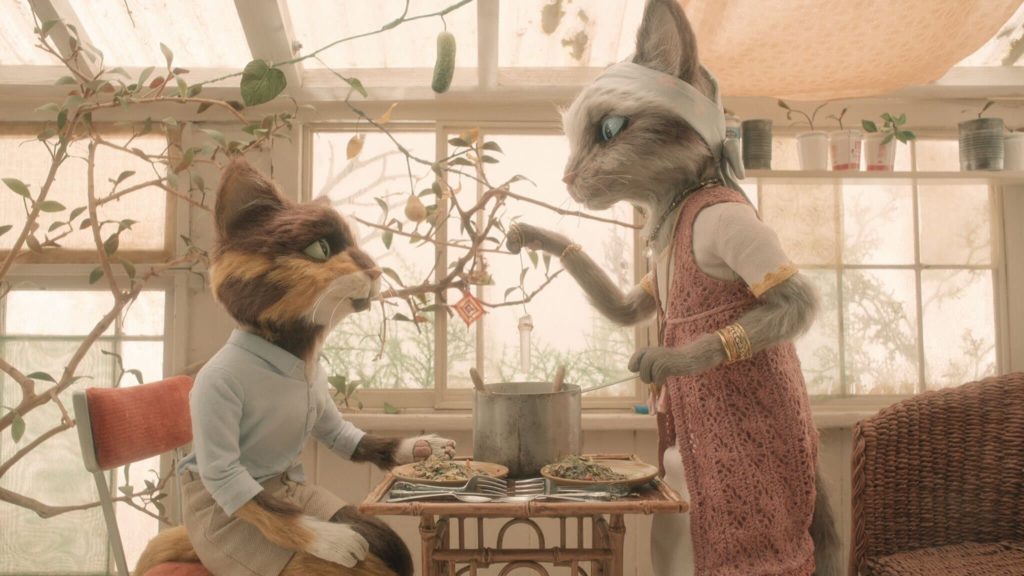Stop motion, despite its fussiness and limitations, is one of the most expressive forms of film. It forces the viewer to confront the physical reality of what they are seeing, but also abstracts it away into something imaginary. There’s an uncanny quasi-reality to it that makes it perfect for unsettling fables — hence the success and enduring popularity of movies like The Nightmare Before Christmas and Coraline.
The House, an anthology film about the horrors of our living quarters when the space itself becomes more important than the inhabitants, uses the nature of stop-motion perfectly. Its texture is so tactile it practically pops off the screen. You can almost feel on your fingertips via forced synesthesia the felt and wood and glass and all the other materials. But each of its three stories also take a plunge into the horrifying and surreal. It makes for great storytelling with rich sociological and moral content.

The first segment, titled “And heard within, a lie is spun” and directed by Emma de Swaef and Marc James Roels, is pretty easily the best of the three chapters. It has a Grimms’ fairy tale quality to it, with a plot about a Faustian bargain in a haunted village, but with a distinctly modern edge: There’s a generational trauma tied to economic fear, and an exploitative landlord who treats his tenants as physical assets. It has an exaggerated but heartbreaking conclusion.

The next segment, “Then lost is the truth that can’t be won” by Niki Lindroth von Bahr, ditches the human characters of the first bit in favor of anthropomorphized animals, and abandons the fairy tale feeling in favor of urban fantasy-horror. We follow a rat who has invested his life savings in real estate and is trying to sell a house, only for pesky beetles to keep appearing at inopportune moments. It’s not quite as good as the first story, but has an anxious modern tone to it and an outrageous climax.

The final story, “Listen again and seek the sun,” directed by Paloma Baeza, takes a third distinct view on a home as a vessel of horror, this time with an ethereal sense of purgatory: a burdened landlord deals with horrible tenants who may or may not be drifting souls. The way the movie slowly unravels a sense of coherent reality is gripping, but it’s still the weakest of the three by a shade or two simply for taking so long to get going. Its conclusion is also not quite as gripping as the other two stories’. But I love the final shot: The film ends on an appropriate, surreal, and oddly moving image of a house doing something houses typically don’t do.
Each of these three shows a tension between the house as a physical object versus the house as a “home” — that is, a place of comfort and companionship. It comes at this theme from wildly different angles, but always tied together with the terrific stop motion — perhaps my favorite specimen of the form since Fantastic Mr. Fox though I’ve hardly been completionist. It’s a smart, unsettling, and often funny movie, exactly a mode of horror I enjoy. I highly recommend it.
- Review Series: 2022: Year in Film
Is It Good?
Very Good (6/8)
Dan is the founder and head critic of The Goods. Follow Dan on Letterboxd. Join the Discord for updates and discussion.

